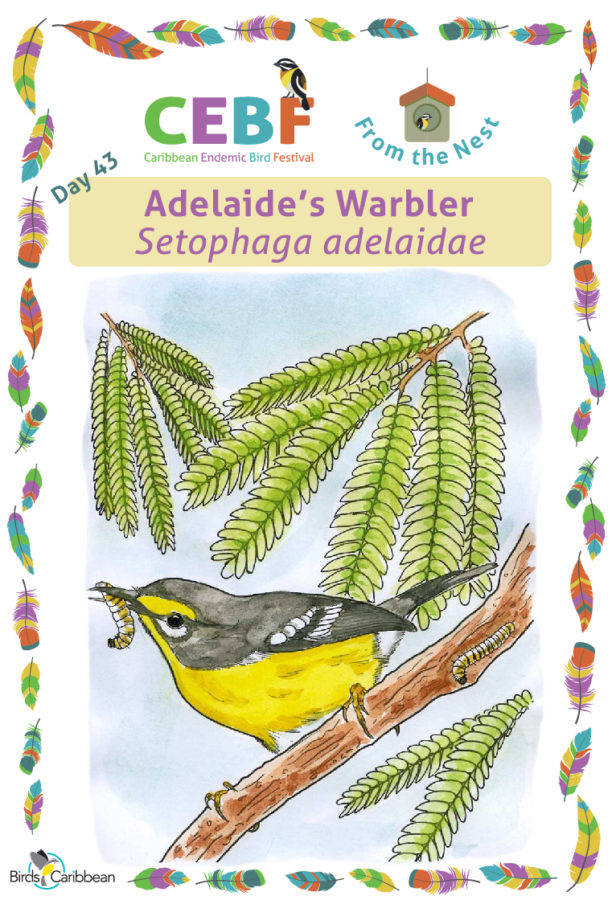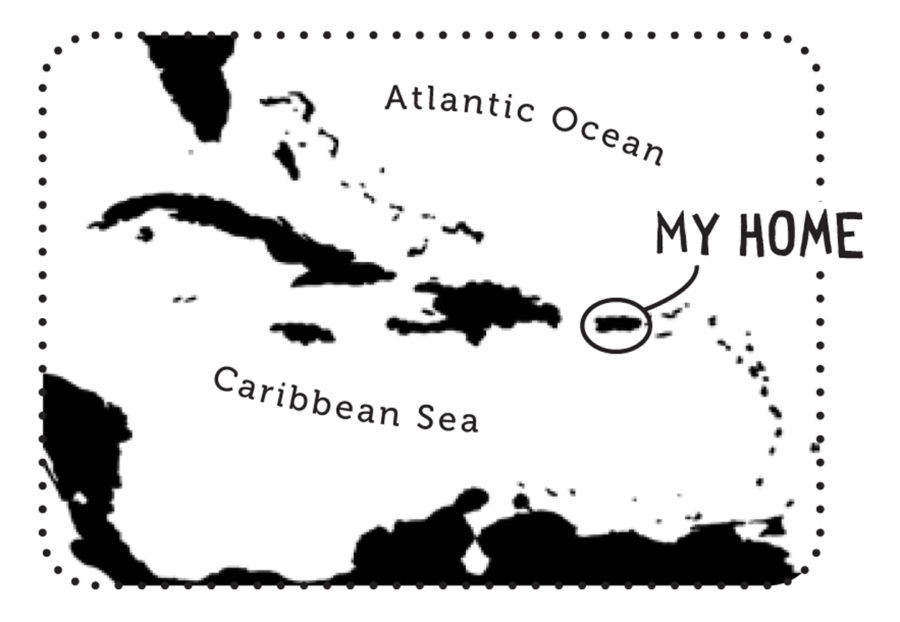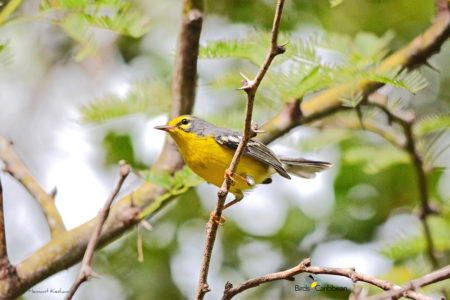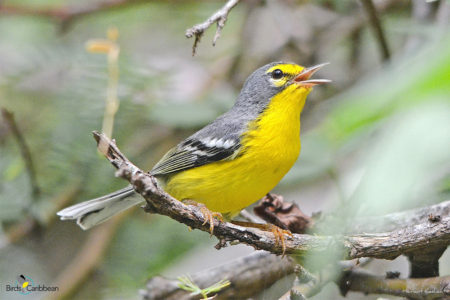Celebrate the Caribbean Endemic Bird Festival (CEBF) with us in our virtual “From the Nest” edition! Have fun learning about a new endemic bird every day. We have colouring pages, puzzles, activities, and more. Download for free and enjoy nature with your family at home.

Endemic Bird of the Day: Adelaide’s Warbler
 This striking little bird has a sunny yellow belly and sings a sweet trilling song. It can be identified by its gray upperparts, yellow underparts, and two white wingbars. It has a yellow eyebrow stripe that may be edged by black above, and a yellow or white patch under the eye. The tail is gray with white outer feathers. Females differ from males by having less white in the tail, and less pronounced black edging in the eyebrow stripe.
This striking little bird has a sunny yellow belly and sings a sweet trilling song. It can be identified by its gray upperparts, yellow underparts, and two white wingbars. It has a yellow eyebrow stripe that may be edged by black above, and a yellow or white patch under the eye. The tail is gray with white outer feathers. Females differ from males by having less white in the tail, and less pronounced black edging in the eyebrow stripe.
The Adelaide’s Warbler (Setophaga adelaidae), along with the Elfin Woods Warbler (Setophaga angelae), is one of two endemic Parulid warblers on the island of Puerto Rico. The two species have different habitat preferences, however, and only coexist in Maricao Commonwealth Forest, in the western part of the island. The Adelaide’s Warbler is abundant in dry coastal scrubland and thickets, moist forests of middle elevation and haystack hills. It is an active bird, moving constantly as it gleans insects and spiders from leaves and twigs. The local name for this species is Reinita Mariposera which means “butterfly-eating warbler,” due to its fondness for eating caterpillars.
Adelaide’s Warblers typically breed from March to June but the season can be variable with the timing and nest success depending on rainfall. They build cup-shaped nests at heights of 1 to 7 in dense cover. Females lay 2 to 4 white or greenish-white eggs, flecked with small small brown spots. Although currently listed as a species of Least Concern by IUCN, the long-term survival of the Adelade’s Warbler could be threatened by loss of its forest habitat and global climate change. As the planet warms, summer drought is expected to increase in many Caribbean islands, and this could reduce survival of the young.
Previously, the Adelaide’s Warbler population in Puerto Rico was considered a single species with races from Barbuda and Saint Lucia. However, in 2000 the species was split into three distinct species. The other two species were named Barbuda Warbler (Setophaga subita) and St. Lucia Warbler (Setophaga delicata). The Puerto Rican species has the name of the daughter of Robert Swift, who captured the first specimen. Learn more about this species, including its range, photos, and calls here.
Colour in the Adelaide’s Warbler!
Download the page from Endemic Birds of the West Indies Colouring Book. Use the drawing above or photo below as your guide, or you can look up pictures of the bird online or in a bird field guide if you have one. Share your coloured-in page with us by posting it online and tagging us @BirdsCaribbean #CEBFfromthenest
Listen to the song of the Adelaide’s Warbler
The Adelaide’s Warbler‘s typical song is described as a variable and loud trill that may increase or decrease in pitch and speed. They have a very large song repertoire and individuals have been recorded as having an average of 23 song types per individual! They also have a pip and a chick call.
Puzzle of the Day
Click on the image below to do the puzzle. You can make the puzzle as easy or as hard as you like – for example, 6, 8, or 12 pieces for young children, all the way up to 1,024 pieces for those that are up for a challenge!


Activity of the Day
FOR KIDS & ADULTS: Enjoy the two short videos of Adelaide’s Warbler below by AvesPuertoRico FelPe. The first video is lovely footage of a bird singing it’s trilly sweet song. The second video shows how active these birds are—hopping along quickly as they forage for insects on twigs and branches, stopping only to sing.
